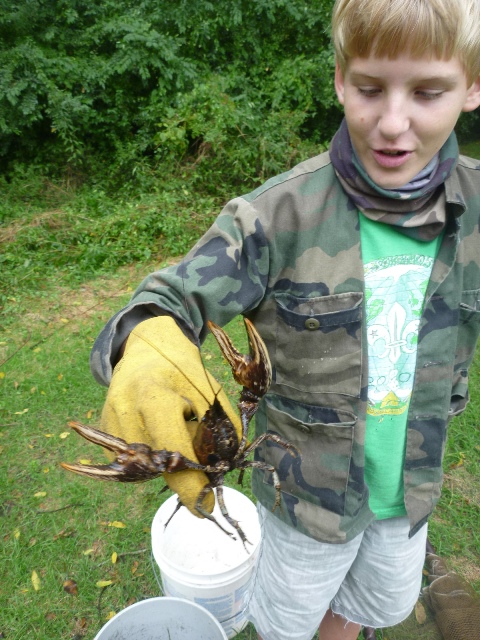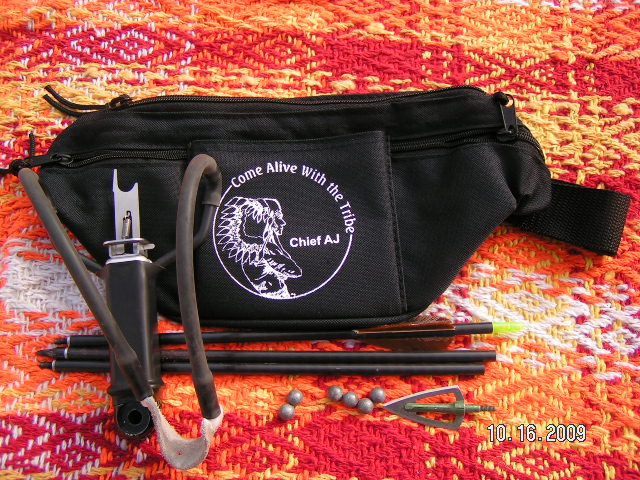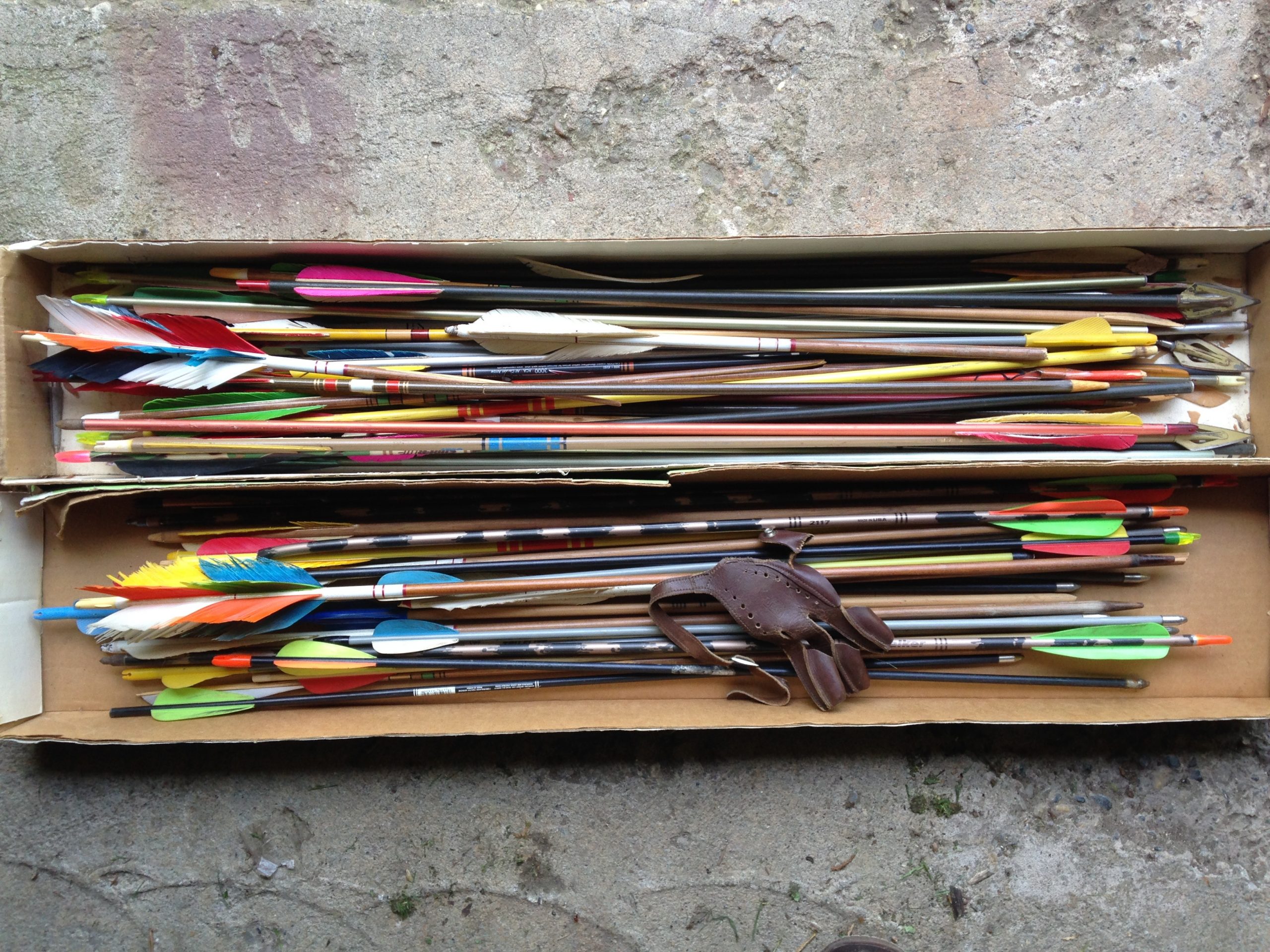More Photos Below!Gallery
I’d been meaning to take the kids fishing this summer. We finally had the chance so we dashed down to the river a half mile down the street.
It’s the Red Cedar. Not a famous or popular river. Kind of a muddy ditch of a thing. The miles near our house are jammed shut by dozens of falldowns so it’s no good for canoeing. But in the autumn it turns on and is a thing of beauty. The water is low and clear and the trees are on fire. I use my light kevlar canoe and go for “boat-o-cross,” hurdling the downfall.
But it’s still lush and green these days. The river water is warm for wading in shorts and water shoes.
The banks are soft and so get silted and don’t look so pretty in summer. People think of it as dirty. Its bad reputation came from the 60’s when several heavy-industries along the banks just dumped their effluent straight in. That kind of work has been cleaned up or moved to Asia for decades now. I googled up a report that said in 2000 a $16k water study was done showing it to be very clean. A DNR-insider neighbor said a study also showed that it had a very high biomass of sport-fish. I’ve heard of really big bass and pike being caught.
It’s funny how misinformation is so common. Most folks I mentioned crayfishing to said Isn’t that illegal? Or they were skeptical about them being good to eat. …In addition to the “Ugh” remarks about the river — a river which most of them haven’t spent any/much time on.
If it hasn’t rained in a week then the water quickly becomes low and good fishing holes are easy to spot as you wade along the shallows. Wading in ankle- and calf-deep water is more like river-walking, to me — open and very enjoyable, since the woods themselve are so dense with brush, nettles and P.I.
So we went out and cast a few times and immediately hooked into some nice pikes, bringing home a keeper 26″-er for dinner.
What a fun thing to do just down the street!
Before I get to the crayfish, I have to start at the start and lead in to how we came to notice them. I also have to say that I like the pike a lot — they seem personable. They’re colored like a leopard frog — a nice color-pattern, I think. And they have golden eyes that seem a bit closer together and with more expression than the usual fish. They seem like characters. I hate to kill them. But then I remember that I don’t kill things that I eat because they’re ugly or because I dislike them. Everything is “cute” in its own way. I also dislike removing a critter that seems to have its territory. I’m rather anti-trophy. I’m inclined to let a big, mature specimen alone — let them have their roost, their hidey hole — let them propagate and be the king. …Thin out the generic masses. (For me some mature critters are easier to kill: like bullfrogs. They’re ugly to me when they’re big — flabby, limp, squishy, shapeless, slimey and rubbery. Now, a toad has character. A frog is zesty. But a big bull is the essence of grotesque. Their squeals when caught are disgusting to me, too. But their big bellers as they declare their turf are amazing. Anyway, froglegs can be welcome morsels.)
The pike hit our topwater perch-pattern 4″ Rapalas within a second or two of the bait landing. Gungho!
I went back a few days later and immediately caught a near-keeper that I released. A few minutes later I hooked a huge thing in a deep hole. It swirled and rolled out there then broke my line, biting through it. Dang! It looked like a dinner for four in itself. I’d bring a 30″-er home. That’s big, but not like the lion of the place. I’ve since tied-up a 8″ section of 20-lb test on swivels to use as a leader. I’ll go back!
Enough about pike…
Right when we first stepped into the river to go fishing we noticed dozens of big crayfish zipping here and there.
It immediately occurred to me that I’d read that Michigan crayfish (crawfish or crawdads) are considered just as tasty as the southern/Louisiana type. My motto also sprang to mind of: “go for what’s easiest and most plentiful.” (This is why I raise raspberries.) Also, I love to trap. I like gathering food while I’m home or doing something else. I like using nets. If you ever want to really catch fish for food you use a net not a line. Lines are for rich people, for sport, for killing time. If you’re hungry and busy you use a net. But, of course, most of us can’t do that much. Crayfish lend themselves to it, though.
As we waded along fishing we kept seeing crayfish. Hundreds! And they were HUGE! A lot of them looked to be 7″ long. Bigger than I remembered as a kid.
I googled them up when we got home and it turns out that a bigger, more aggressive specie is invading the northern waters, displacing the natives. It’s not just a simple switch — the invaders — the Rusty type — eat a lot of fish eggs and pressure the bluegills on their beds. We’re encouraged to catch as many of them as we can. The Michigan law is that you can catch crayfish all you like, but not for profit. You need a fishing license. And you can’t move Rusties into other bodies of water or use them for bait elsewhere.
I also googled up how to make a crayfish trap. I bought $15 worth of 1/2″-grid hardware cloth wire mesh-screen and medium zipties and in an hour I had wired-up a couple nice tube’n’cone traps. You just ziptie a section of wire into a 12″ x 36″ tube, then tie cones into each end. You leave a 3″ opening in each cone. Then you cut an “X” into the main part, to bend open and shut for installing bait and removing crayfish. Suggested bait is fish guts, bacon or hotdogs. (These traps also work for minnows.)
I spraypainted the traps a flat camo brown and went and set them out in the river, roping them to snags and pinning them into likely position with stakes. The kids and I wear camo or drab attire when we do this work as we’re starting out at the park and in view of a busy highway. We don’t want to draw attention to our bounty!
We also planned on using just plain frog-nets to go out and scoop up crayfish. They’re so dense they coat the river-bed. When you walk in front of them they scoot backwards away. So if one kid holds a net behind then another can walk ahead with a bucket and they haul in the frisky critters. Kids love this stuff!
Of course you can catch them in lakes and such, too. Oh, and I read that they are the most eaten shellfish in the world!
…But then it rained and the water got muddy. So we haven’t used the netting angle yet.
Despite the higher water within a day or so our traps were full of big crayfish!
Some were blue, some tan, some rusty, so I suppose we had a mix of species.
The boys want to keep a few as pets. This is also a popular thing to do. They’ll google up how to do that, as I’ve noticed there’s lots of info online. Pets or meat!
I also googled up how to care for the crays and prep them to eat. You clean them in a tub of water with an overflowing hose on. This flushes them clean and flushes them out. It also keeps them alive awhile. Still water kills them dead in short order. If you leave them in a flowing, aerating tub for a couple days their digestive tracts will totally empty out, but many folks don’t fret about that. They don’t last long, though, no matter what, so you need to put them on ice if you want to keep or transport them. Keep them wet and iced and they’ll live for a few days.
Let your fingers do the typing to find “crab boil” recipes. The Louisiana way works fine.
We made our own boil-mix and boiled them for 6 minutes. They were plenty tasty! Like little lobsters, for sure. Each tail has a couple teaspoons of meat, each claw has a teaspoon.
I read that to get them truly flavored by the boil you need to soak them a couple days in it, but that changes your approach. It’s tricky to sort out. It said this means a cold-tail recipe, but I’d think you could reheat them. Anyway, it looks like there are 100 ways to do it. But you always want to start with fresh, frisky, living crabs. Dead ones end up mushy and might be spoiled.
When it came time to bust the meat out of the shells, it seemed to take about a minute for each tablespoon of meat. Cold beer is truly a must. It’s a timekiller of a meal. As one pro says, if you’re hungry, eat some burgers. Crayfish are “sport eating.” Likely we’ll get faster at ’em. I plan on using small scissors next time.
I also see the point of tossing the critters, after they’re boiled, in a bowl of spice powder and butter. This gets tasty stuff on your fingers which then gets on the morsels as you liberate them. We didn’t go very spicy on our first batch: they definitely want a bit more zest.
Some folks say to dip in butter. But maybe that ends up with lots of butter after dipping dozens of little morsels. I’ll go more for tossing in butter.
So we had an amazing dinner, actually. Localism on steriods, so to speak… Venison stew (shot next door). Salad with dad’s tomatoes (across the woods). Cider (from down the street). Crayfish “round two” (down the street). Raspberries (from our garden…with brandy/chambord drizzle, chocolate sauce and ice-cream).
Now check out the pics! 🙂
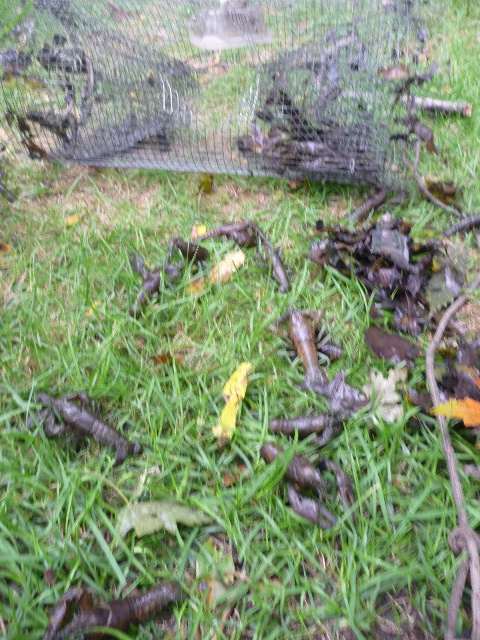
Blurry pic of beasties crawling around.
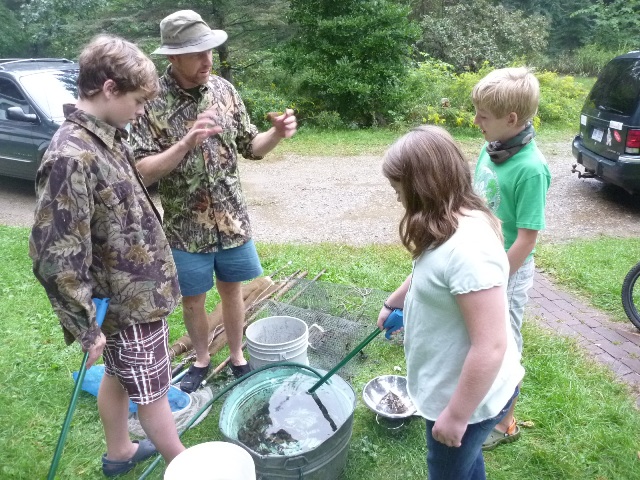
Cleaning em up in the yard.
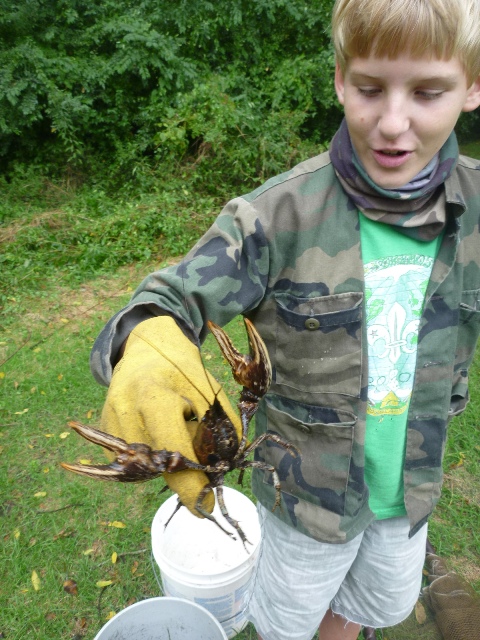
A big one! 7″ long, 7″ wide. Careful!
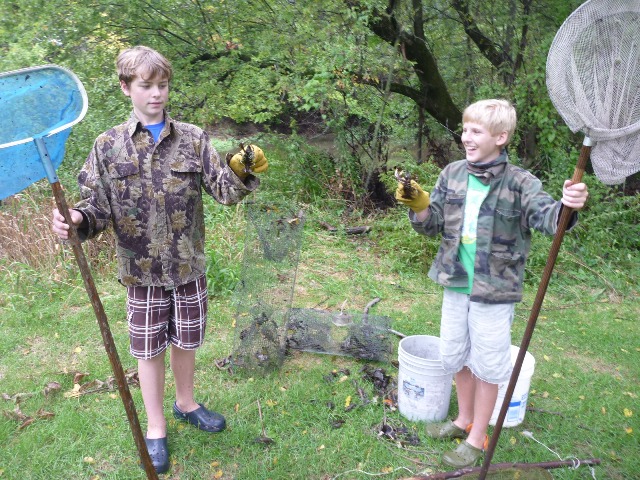
Crayfishermen.

Feast of boiled beast!
